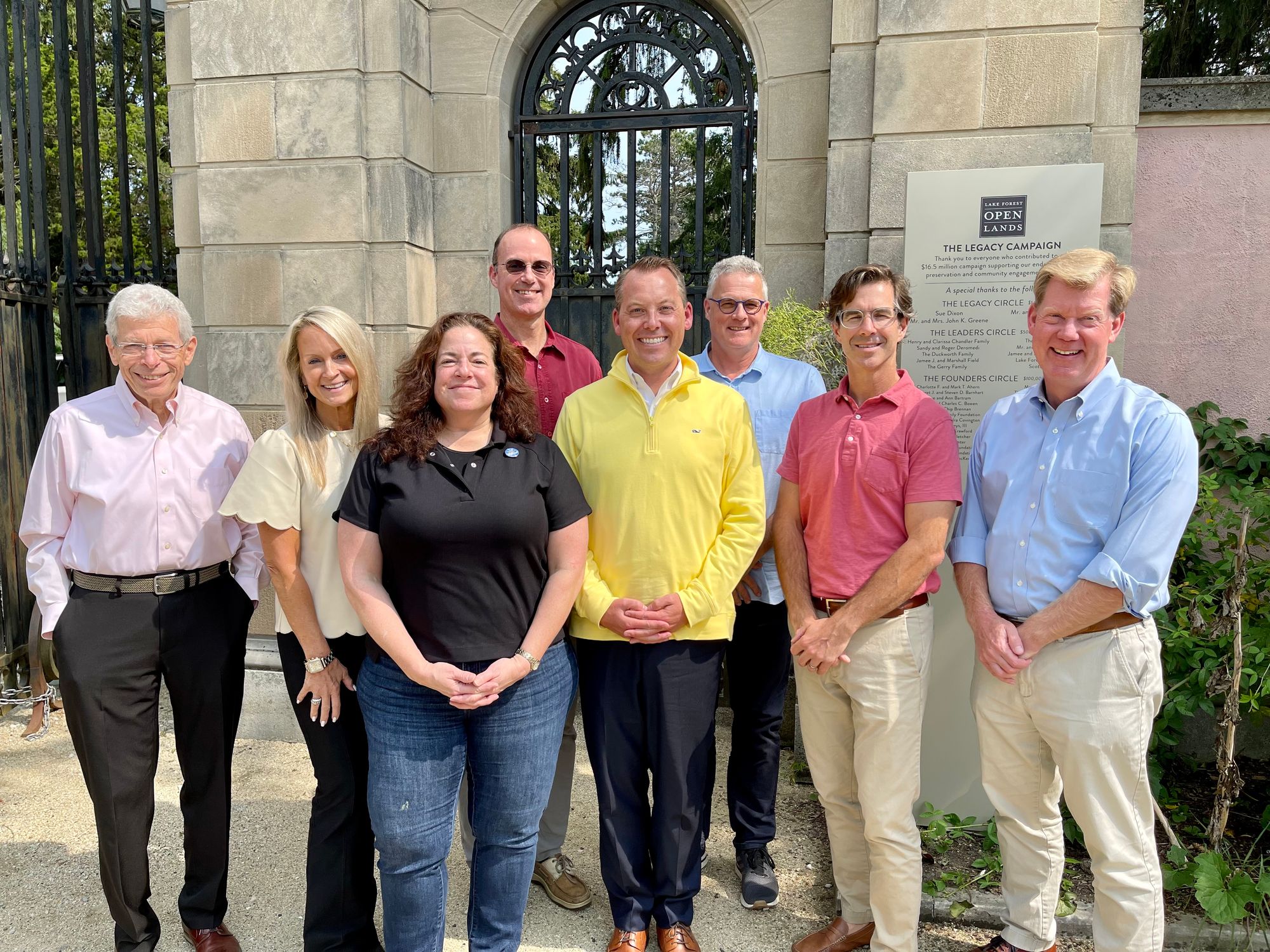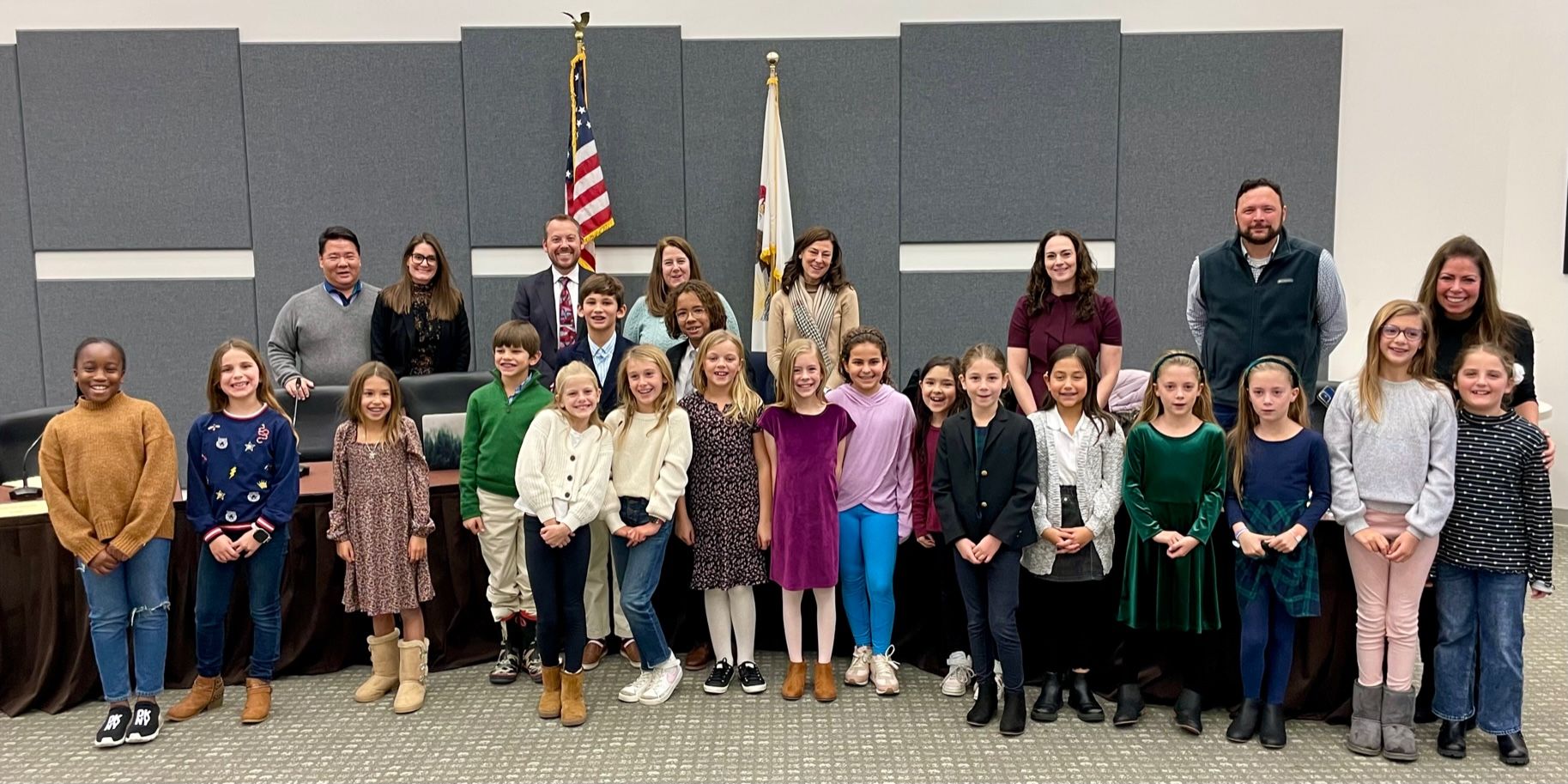Dr. Matthew Montgomery: What I've learned from having two school boards at once
Dr. Matthew Montgomery, superintendent of two different districts, gives his best advice for strengthening board relations.

Dr. Matthew Montgomery knows more than a thing or two about school board relations. In fact, as the superintendent of two districts on the North Shore of Chicago, he currently reports to two boards—one for Lake Forest Community High School District 115 and another for Lake Forest Elementary School District 67. Managing and partnering with two separate boards has given him a unique look into one of the most important—and potentially volatile—relationships school leaders are tasked with maintaining. Read on to see what Montgomery has to say about his strategies for working with board members to positively impact the students they serve.
A school board can make or break a district—or a superintendency. Tension between boards and their superintendents has caused too many highly adept leaders to exit the industry. The effects of the pandemic only amplified this reality. And unfortunately, educators who have what it takes to lead are actively choosing not to pursue superintendencies simply due to the pressure of working directly with—and for—a board.
But school boards aren’t always the problem. Sometimes, it’s the superintendent. A leader’s fear of failure or discomfort can widen divides in a community, preventing all parties from doing what they came to do: educate students and impact the next generation of world shapers.
We as school leaders can take initiative to make our boards healthier by establishing a baseline of boundaries and understanding around the roles we each play. Healthy boards serve by setting the direction for a school district, providing educational oversight, and exercising fiscal responsibility on behalf of our taxpayers. As a superintendent with two separate boards, each made up of seven members, I can confidently say that effective school boards can be the conduit to better serving students and staff.
So what about us? As school leaders, our role is to expertly structure a system whereby individual board members can serve in a complete and future-focused way. Tension is part of that work, and disagreement is inevitable—but it’s our job to build and maintain relationships strong enough to withstand any conflict. Before we can lead with resolve, we must first get comfortable with discomfort.
Invest in personal and professional relationships.
In my experience, the primary non-negotiable for fostering an effective and focused board is investing in relationships with each board member. As a superintendent with 14 of these relationships to maintain, I understand the time commitment this requires—but the return on investment is immeasurable.
The more time we invest in these relationships, the easier it will be to overcome the barriers we face in our work together. These barriers can range from disagreements on how to meet student needs, to debates over polarizing curriculum, to discussions about our hiring practices. No matter where those pain points lie, the closer our relationships are, the more likely we are to assume mutual goodwill and trust. The relationship between a superintendent and their board needs to be symbiotic, whether that means agreeing to disagree or—more ideally—finding mutually beneficial solutions.
When it comes to building healthy board relationships, authenticity is paramount. You should connect with board members and genuinely seek to understand who they are, why they are driven to serve their community in this capacity, and what they want to achieve. Discovering each board member’s niche area of expertise (finance, construction, law, etc.) and exploring connections to their work with schools can strengthen both the board and the district. Honing in on board members’ biggest strengths will only elevate their value in your school system.
In working with a school board, it’s safe to assume that disagreements will happen. And in today’s climate, we can be quick to lean away from contentious relationships, especially if there are political differences. But bowing out of these relationships is not an option—that will only widen the gap between you and a board member. Remember: Your understanding of each member is critical. It will help you foresee and mitigate issues both preemptively and in the moment. But both the superintendent and their board members will have to invest time and patience into these relationships—phone calls, standing meetings, and any other opportunities for further connection.

Communicate with consistency and respect.
As with any productive professional relationship, there should also be a high level of trust between you and your board members. Openness can certainly cultivate trust, but so can consistency. Be sure your board members know when you will regularly connect. I meet quarterly with each of my members, for example, but you’ll have to find the rhythm that works best for you and your board. And when the rubber meets the road, this investment in trust can expedite solutions even where there’s tension. This foundation of mutual respect and understanding will allow for more authentic and fruitful conversations.
Practically speaking, the frequency and general flow of regular meetings, retreats, and other connections between board and leadership should be built on mutual respect for everyone’s time, energy, and input. More is not always better. Systems and structures are necessary to ensure that your time with your board is strategic and purposeful.
Being consistent with your school board members will help you build an even stronger culture of productivity and respect. It goes without saying that transparency matters—leaders and their boards must always remain respectful of their communities by conducting business in the sunshine. Legally speaking, most states require school board meetings to be public. You can, however, help prepare your board members for these meetings by consistently informing them of any relevant issues.
Consider sending weekly updates on the district, individual school buildings, and even department-level information that is pertinent to the board. Providing these updates also demonstrates respect for your board members’ time and efforts by requiring less heavy lifting of them on the front end. And when your board is better prepared, they are able to ask more productive questions and engage in more impactful decision making.
Another reason to systematize your board communications is member turnover. School boards are designed to shift regularly in order to best serve our communities. Change isn’t a flaw of school boards—it’s a feature. In my two districts, for example, the community has an unofficial rule that most members only serve two terms. And as a way to make sure that these positions are being filled by the best candidates, we have a caucus system that identifies, vets, and endorses new members.
But if you have systems in place and you consistently communicate your expectations and norms, turnover on your board won’t derail important work. In my districts, we provide board members with a list of “Board Commitments,” ranging from “Demonstrate mutual trust and respect for each other while accepting outcomes,” to “Assume positive intent,” to “Be solution-oriented.” These mutually agreed-upon norms help keep our board members on the same page and ensure our work together stays efficient and productive, even as members come and go.
Orientation sessions, regular board meetings, and communication provide new board members with the tools they need for progress, while also offering consistency for remaining members in the midst of change. Your board’s culture may shift slightly when old members leave and new ones start, but implementing strong systems of communication allows you to focus on fostering those important relationships.
Establish a shared vision.
Disagreements with and within your board will arise from time to time. That’s a given. But having a shared vision for your schools establishes common ground, giving you the ability to cut through tension, refocus conversations, and lead forward with an end goal in mind.
It’s not just about sharing a vision with your board, either.Along with an additional elementary district in the area, the two districts I lead brought together over 150 stakeholders—staff, administrators, community leaders, parents, and students—to create one unifying Portrait of a Learner. This work, completed over the course of half a school year, determined our community’s collective vision for what we want to provide our kids beyond academic excellence. Now, the Portrait serves as our North Star, guiding the work we do and the decisions we make. We align both the work of our school boards and our strategic plans to the Portrait’s six major competencies.
The Portrait we’ve created together not only leads our work internally with our boards, but also guides conversations with our wider community. This keeps students at the center of our work. While academic excellence is the foundation of everything we do, this shared vision allows us to interweave life skills, ensuring our students will be successful outside the classroom and achieve overall well-being regardless of their pathway.
Oftentimes, disagreements distract us from why we’re here in the first place and what we want to accomplish together. It’s my duty as superintendent to re-center those conversations around this shared vision when necessary.

Lean on your team.
Leading and supporting school board members takes a significant amount of your time, energy, and resources as a superintendent. That’s why learning to lean on an internal team of experts is essential to your district’s success. Working with internal teams—from your administrative cabinet to your principals and teachers—ensures that the work you and your board envision is actually carried out in your district’s buildings and classrooms.
It goes without saying that supporting your staff at all levels will multiply your impact in your district. This also works to strengthen the trust you’ve established with your board—they can be assured that you’re translating their work and vision into real-time results. If, for example, your board establishes a new districtwide attendance policy, they need to have faith in your principals and their staffs to implement the policy accordingly.
Having strong internal teams starts with generating a culture of respect and productivity. Just as you do with your school board, you can support this culture by investing in personal and professional relationships, communicating with your teams consistently, and establishing a shared vision to inspire and center your work. This will build the trust necessary to support your board and your entire staff. Without every team’s trust, I’m not going to meet the needs of my board. If my priority is to remove barriers so the board can do their best work, I need to be able to trust that my internal teams are also invested and engaged in this work. Without all our district staff being in sync, the whole system collapses.
You’ll also want to quickly lean into any tension that arises on your internal teams. Engaging with conflict is difficult, but it can also reveal blindspots and areas for growth that need to be addressed. Much like your board relations, the energy and time you’ve put into building relationships and trust with staff members will allow you to navigate sensitive issues and withstand internal conflicts. Your return on this investment is an increased ability to reach and actualize the mission and vision of your schools.
Get comfortable with tension.
At the end of the day, superintendents must find a way to get comfortable with the tension of board relations. Aversion to and fear of inevitable conflicts and disagreements will only hinder effective communication and derail your work together. By maintaining a respectful, inquisitive approach to disagreements, you can turn conflict into professional curiosity, which leads to progress instead of frustration and inaction. Tension, after all, is a necessary ingredient for transformation. Without it, a system cannot significantly change for the better.
Living in the tension all starts with respect—not just for your board members’ work and expertise, but for who they are as people. Fostering these connections can translate into our most important work as school leaders: serving our communities and preparing our students to be our next generation of leaders.
Originally published as "Comfortable Tension" in the Winter 2023 edition of SchoolCEO Magazine.
Subscribe below to stay connected with SchoolCEO!


